Medion S10 OLED review: The multimedia laptop with an OLED panel and Core Ultra 7
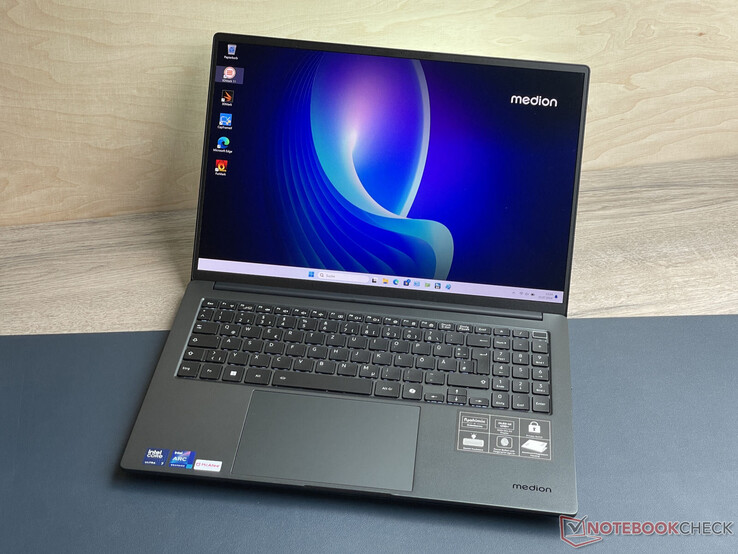
Medion's S10 OLED is a slim, compact multimedia laptop which is 16 inches in size. It features a Core Ultra 7 155H, 16 GB RAM, a 1-TB SSD and a contrast-rich OLED display. Competitors include devices such as the Apple MacBook Air 15, Lenovo IdeaPad Pro 5 16IMH G9, Samsung Galaxy Book4 Edge 16, Xiaomi RedmiBook Pro 16 2024 and the Samsung Galaxy Book4 Pro 16.
Possible competitors compared
Rating | Version | Date | Model | Weight | Height | Size | Resolution | Price |
|---|---|---|---|---|---|---|---|---|
| 76.7 % | v8 | 07 / 2024 | Medion S10 OLED Ultra 7 155H, Arc 8-Core | 1.6 kg | 17.8 mm | 16.00" | 3840x2400 | |
| 87.9 % v7 (old) | v7 (old) | 05 / 2024 | Lenovo IdeaPad Pro 5 16IMH G9 Ultra 7 155H, Arc 8-Core | 1.9 kg | 17.5 mm | 16.00" | 2560x1600 | |
| 80.2 % | v8 | 07 / 2024 | Samsung Galaxy Book4 Edge 16 SD X Elite X1E-80-100, Adreno X1-85 3.8 TFLOPS | 1.5 kg | 12.3 mm | 16.00" | 2880x1800 | |
| 89.7 % v7 (old) | v7 (old) | 04 / 2024 | Xiaomi RedmiBook Pro 16 2024 Ultra 7 155H, Arc 8-Core | 1.9 kg | 15.9 mm | 16.00" | 3072x1920 | |
| 88.9 % v7 (old) | v7 (old) | 04 / 2024 | Samsung Galaxy Book4 Pro 16 Ultra 7 155H, Arc 8-Core | 1.5 kg | 12.5 mm | 16.00" | 2880x1800 | |
| 91.6 % v7 (old) | v7 (old) | 03 / 2024 | Apple MacBook Air 15 M3 M3, M3 10-Core GPU | 1.5 kg | 11.5 mm | 15.60" | 2880x1664 |
Please note: We have recently updated our rating system and the results of version 8 are not comparable with the results of version 7. More information is available here.
Case & connectivity - No USB 4 for the S10
Medion has packed the S10's technology into a compact, sleek metal case (aluminum-magnesium alloy) with slim bezels. The used colorway (dark-gray-anthracite-black) underlines the laptop's serious appearance. The device has been built well and weighs about 1.6 kg, which is on par with the competition. Its stability and stiffness are fine. The lid's maximum opening angle is around 160 degrees.
It has a total of 5 USB ports (3x USB-A, 2x USB-C)—unfortunately, they only run according to the USB 3.2 Gen 1 standard. A device with the S10's claim should at least provide users with USB 4 or Thunderbolt 4—not least to be able to use an external GPU if required. Nevertheless, its USB-C ports support DP Alt-Mode and Power Delivery—we tried it out. The laptop therefore offers a total of three video outputs (1x HDMI, 2x DP).
The laptop's wireless module houses a WiFi 6E chip (Intel AX211), which delivers good to very good data rates overall. The built-in webcam (2.1 MP) is a pretty standard affair, but it scores points with its on/off switch. A Gigabit Ethernet port and a card reader are missing.
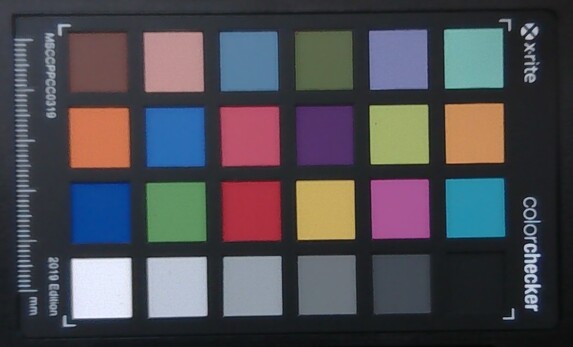
Sustainability
The device's packaging material consists mainly of cardboard and paper. The amount of plastic used is limited: The power supply unit is in a transparent bag, and the laptop is in a fiber bag made from recycled PET. The inside of the cardboard lid is covered with a thin layer of foam. You should be able to carry out maintenance and repair work—the hardware is accessible after removing the base plate. Software updates should be secured for the next few years via the Windows update function. Medion hasn't yet provided any drivers or software for the laptop on its website. We would therefore recommend backing up the driver folder on the recovery partition.
Input devices - The S10 has backlit keys
Medion has installed a backlit chiclet keyboard with a three-column numeric keypad into the laptop. Its concave keys (short travel, clear pressure point) feel decent to type on but their resistance could be a little crisper. The keyboard doesn't rock back and forth while typing. The arrow keys and the two "Enter" keys are quite small. In contrast, the multi-touch clickpad with a glass surface is very generously sized (approx. 14 x 9.6 cm).
Display - OLED, DCI-P3, 16:10
The 16-inch screen (3,840 x 2,400 pixels) with a 16:10 aspect ratio offers short response times that are typical for OLED and a great black level. The reflective display surface in combination with a luminosity just above the target unfortunately mostly limits the S10 to indoor use. Outdoor reading would only be possible in the shade or on a cloudy day. Our measuring device registered screen flickering (60 Hz) at all brightness levels. This is due to the panel's brightness control.
| |||||||||||||||||||||||||
Brightness Distribution: 96 %
Center on Battery: 307 cd/m²
Contrast: 30700:1 (Black: 0.01 cd/m²)
ΔE ColorChecker Calman: 2.1 | ∀{0.5-29.43 Ø4.78}
calibrated: 2.08
ΔE Greyscale Calman: 0.9 | ∀{0.09-98 Ø5}
98.6% AdobeRGB 1998 (Argyll 3D)
100% sRGB (Argyll 3D)
99.9% Display P3 (Argyll 3D)
Gamma: 2.197
CCT: 6513 K
| Medion S10 OLED Samsung SDC4174, OLED, 3840x2400, 16", 60 Hz | Lenovo IdeaPad Pro 5 16IMH G9 NE160QDM-NY2, IPS, 2560x1600, 16", 120 Hz | Samsung Galaxy Book4 Edge 16 ATNA60CL07-0, OLED, 2880x1800, 16", 120 Hz | Xiaomi RedmiBook Pro 16 2024 TL160MDMP03_0, IPS, 3072x1920, 16", 165 Hz | LG gram Pro 16Z90SP ATNA60CL06-0, OLED, 2880x1800, 16", 120 Hz | Samsung Galaxy Book4 Pro 16 ATNA60CL07-0, OLED, 2880x1800, 16", 120 Hz | Apple MacBook Air 15 M3 IPS, 2880x1664, 15.6", 60 Hz | |
|---|---|---|---|---|---|---|---|
| Display | -25% | -0% | -3% | -1% | -0% | -4% | |
| Display P3 Coverage (%) | 99.9 | 63.3 -37% | 99.5 0% | 98.8 -1% | 99.8 0% | 99.5 0% | 98.7 -1% |
| sRGB Coverage (%) | 100 | 95.2 -5% | 100 0% | 100 0% | 100 0% | 100 0% | 99.9 0% |
| AdobeRGB 1998 Coverage (%) | 98.6 | 65.3 -34% | 97.5 -1% | 89.9 -9% | 94.6 -4% | 97.5 -1% | 87.8 -11% |
| Response Times | -709% | 52% | -1575% | -366% | 57% | -1495% | |
| Response Time Grey 50% / Grey 80% * (ms) | 1.7 ? | 15 ? -782% | 0.64 ? 62% | 39.2 ? -2206% | 6 ? -253% | 0.64 ? 62% | 35.3 ? -1976% |
| Response Time Black / White * (ms) | 1.4 ? | 10.3 ? -636% | 0.68 ? 51% | 14.6 ? -943% | 14 ? -900% | 0.68 ? 51% | 15.6 ? -1014% |
| PWM Frequency (Hz) | 60 ? | 240 ? | 481 | 240 ? | |||
| PWM Amplitude * (%) | 90 | 50 44% | 41 54% | ||||
| Screen | -383% | 18% | -418% | 18% | 18% | -393% | |
| Brightness middle (cd/m²) | 307 | 368 20% | 385 25% | 520 69% | 420 37% | 385 25% | 526 71% |
| Brightness (cd/m²) | 307 | 368 20% | 391 27% | 510 66% | 421 37% | 391 27% | 506 65% |
| Brightness Distribution (%) | 96 | 91 -5% | 97 1% | 93 -3% | 99 3% | 97 1% | 92 -4% |
| Black Level * (cd/m²) | 0.01 | 0.31 -3000% | 0.35 -3400% | 0.006 40% | 0.37 -3600% | ||
| Contrast (:1) | 30700 | 1187 -96% | 1486 -95% | 70000 128% | 1422 -95% | ||
| Colorchecker dE 2000 * | 2.1 | 2.4 -14% | 1.1 48% | 2.9 -38% | 1.66 21% | 1.1 48% | 1.4 33% |
| Colorchecker dE 2000 max. * | 4.87 | 6.5 -33% | 1.8 63% | 6.2 -27% | 4.92 -1% | 1.8 63% | 2 59% |
| Colorchecker dE 2000 calibrated * | 2.08 | 0.8 62% | 1.1 47% | 3.39 -63% | 0.6 71% | ||
| Greyscale dE 2000 * | 0.9 | 4.5 -400% | 1.4 -56% | 4.3 -378% | 1.3 -44% | 1.4 -56% | 2.1 -133% |
| Gamma | 2.197 100% | 2.21 100% | 2.24 98% | 2.19 100% | 2.27 97% | 2.24 98% | 2.23 99% |
| CCT | 6513 100% | 6324 103% | 6444 101% | 7422 88% | 6609 98% | 6444 101% | 6865 95% |
| Total Average (Program / Settings) | -372% /
-353% | 23% /
22% | -665% /
-494% | -116% /
-63% | 25% /
20% | -631% /
-467% |
* ... smaller is better
Color accuracy is given: The three common color spaces (AdobeRGB, sRGB, DCI-P3) can be reproduced completely or almost completely. The display also delivers good color reproduction straight out of the box: with a deviation of approx. 2.1, the target (DeltaE < 3) is met. Calibration doesn't result in any improvements.
Display Response Times
| ↔ Response Time Black to White | ||
|---|---|---|
| 1.4 ms ... rise ↗ and fall ↘ combined | ↗ 0.7 ms rise | |
| ↘ 0.7 ms fall | ||
| The screen shows very fast response rates in our tests and should be very well suited for fast-paced gaming. In comparison, all tested devices range from 0.1 (minimum) to 240 (maximum) ms. » 7 % of all devices are better. This means that the measured response time is better than the average of all tested devices (20.2 ms). | ||
| ↔ Response Time 50% Grey to 80% Grey | ||
| 1.7 ms ... rise ↗ and fall ↘ combined | ↗ 0.9 ms rise | |
| ↘ 0.8 ms fall | ||
| The screen shows very fast response rates in our tests and should be very well suited for fast-paced gaming. In comparison, all tested devices range from 0.165 (minimum) to 636 (maximum) ms. » 7 % of all devices are better. This means that the measured response time is better than the average of all tested devices (31.6 ms). | ||
Screen Flickering / PWM (Pulse-Width Modulation)
| Screen flickering / PWM detected | 60 Hz Amplitude: 90 % | ≤ 100 % brightness setting | |
The display backlight flickers at 60 Hz (worst case, e.g., utilizing PWM) Flickering detected at a brightness setting of 100 % and below. There should be no flickering or PWM above this brightness setting. The frequency of 60 Hz is very low, so the flickering may cause eyestrain and headaches after extended use. In comparison: 53 % of all tested devices do not use PWM to dim the display. If PWM was detected, an average of 8118 (minimum: 5 - maximum: 343500) Hz was measured. | |||
Performance - Meteor Lake sometimes takes things slowly
Thanks to Meteor Lake, the slim 16-inch laptop delivers enough computing power for office and multimedia applications as well as some frugal games. This test device is available for around US$1,400. A model with a Core i5-13420H (Raptor Lake), 512-GB SSD and a QHD+ display (IPS) costs from around US$870.
Testing conditions
The laptop doesn't offer any proprietary performance profiles. The standard Windows profiles (see table) are available—we used the balanced profile (benchmarks, battery test). We couldn't determine any differences in performance between the profiles.
| Best performance | Balanced | Best energy-saving | |
|---|---|---|---|
| Power Limit 1 (HWInfo) | 45 watts | 45 watts | 45 watts |
| Power Limit 2 (HWInfo) | 60 watts | 60 watts | 60 watts |
| Noise (CP 2077 Phantom) | - | 42 dB (A) | - |
| Performance (CP 2077 Phantom) | - | 14 fps | - |
Processor
The Core Ultra 7 155H's 16 CPU cores (6P, 8E, 2LPE; Meteor Lake) have a total of 22 threads. The CPU reacts to continuous multi-thread load (CB15 loop) with constant performance development. The resulting benchmark values are on par with the CPU's average.
Cinebench R15 Multi continuous test
* ... smaller is better
AIDA64: FP32 Ray-Trace | FPU Julia | CPU SHA3 | CPU Queen | FPU SinJulia | FPU Mandel | CPU AES | CPU ZLib | FP64 Ray-Trace | CPU PhotoWorxx
| Performance rating | |
| Lenovo IdeaPad Pro 5 16IMH G9 | |
| Average of class Multimedia | |
| Xiaomi RedmiBook Pro 16 2024 | |
| Medion S10 OLED | |
| Samsung Galaxy Book4 Pro 16 | |
| Average Intel Core Ultra 7 155H | |
| LG gram Pro 16Z90SP | |
| Samsung Galaxy Book4 Edge 16 | |
| AIDA64 / FP32 Ray-Trace | |
| Lenovo IdeaPad Pro 5 16IMH G9 | |
| Average of class Multimedia (2214 - 50388, n=56, last 2 years) | |
| Medion S10 OLED | |
| Xiaomi RedmiBook Pro 16 2024 | |
| Samsung Galaxy Book4 Pro 16 | |
| Average Intel Core Ultra 7 155H (6670 - 18470, n=50) | |
| LG gram Pro 16Z90SP | |
| Samsung Galaxy Book4 Edge 16 | |
| AIDA64 / FPU Julia | |
| Lenovo IdeaPad Pro 5 16IMH G9 | |
| Average of class Multimedia (12867 - 201874, n=57, last 2 years) | |
| Xiaomi RedmiBook Pro 16 2024 | |
| Medion S10 OLED | |
| Average Intel Core Ultra 7 155H (40905 - 93181, n=50) | |
| Samsung Galaxy Book4 Pro 16 | |
| LG gram Pro 16Z90SP | |
| Samsung Galaxy Book4 Edge 16 | |
| AIDA64 / CPU SHA3 | |
| Lenovo IdeaPad Pro 5 16IMH G9 | |
| Average of class Multimedia (653 - 8623, n=57, last 2 years) | |
| Xiaomi RedmiBook Pro 16 2024 | |
| Medion S10 OLED | |
| Samsung Galaxy Book4 Pro 16 | |
| Average Intel Core Ultra 7 155H (1940 - 4436, n=50) | |
| LG gram Pro 16Z90SP | |
| Samsung Galaxy Book4 Edge 16 | |
| AIDA64 / CPU Queen | |
| Xiaomi RedmiBook Pro 16 2024 | |
| Lenovo IdeaPad Pro 5 16IMH G9 | |
| LG gram Pro 16Z90SP | |
| Samsung Galaxy Book4 Pro 16 | |
| Average Intel Core Ultra 7 155H (64698 - 94181, n=50) | |
| Average of class Multimedia (13483 - 181505, n=57, last 2 years) | |
| Medion S10 OLED | |
| Samsung Galaxy Book4 Edge 16 | |
| AIDA64 / FPU SinJulia | |
| Lenovo IdeaPad Pro 5 16IMH G9 | |
| Xiaomi RedmiBook Pro 16 2024 | |
| Average of class Multimedia (1240 - 28794, n=57, last 2 years) | |
| Samsung Galaxy Book4 Pro 16 | |
| Average Intel Core Ultra 7 155H (5639 - 10647, n=50) | |
| Medion S10 OLED | |
| LG gram Pro 16Z90SP | |
| Samsung Galaxy Book4 Edge 16 | |
| AIDA64 / FPU Mandel | |
| Lenovo IdeaPad Pro 5 16IMH G9 | |
| Average of class Multimedia (6395 - 105740, n=56, last 2 years) | |
| Medion S10 OLED | |
| Xiaomi RedmiBook Pro 16 2024 | |
| Samsung Galaxy Book4 Pro 16 | |
| Average Intel Core Ultra 7 155H (18236 - 47685, n=50) | |
| LG gram Pro 16Z90SP | |
| Samsung Galaxy Book4 Edge 16 | |
| AIDA64 / CPU AES | |
| Lenovo IdeaPad Pro 5 16IMH G9 | |
| Average Intel Core Ultra 7 155H (45713 - 152179, n=50) | |
| Average of class Multimedia (13243 - 169946, n=57, last 2 years) | |
| Xiaomi RedmiBook Pro 16 2024 | |
| LG gram Pro 16Z90SP | |
| Medion S10 OLED | |
| Samsung Galaxy Book4 Edge 16 | |
| Samsung Galaxy Book4 Pro 16 | |
| AIDA64 / CPU ZLib | |
| Lenovo IdeaPad Pro 5 16IMH G9 | |
| Xiaomi RedmiBook Pro 16 2024 | |
| LG gram Pro 16Z90SP | |
| Medion S10 OLED | |
| Average of class Multimedia (167.2 - 2022, n=57, last 2 years) | |
| Samsung Galaxy Book4 Pro 16 | |
| Average Intel Core Ultra 7 155H (557 - 1250, n=50) | |
| Samsung Galaxy Book4 Edge 16 | |
| AIDA64 / FP64 Ray-Trace | |
| Average of class Multimedia (1014 - 26875, n=57, last 2 years) | |
| Lenovo IdeaPad Pro 5 16IMH G9 | |
| Medion S10 OLED | |
| Xiaomi RedmiBook Pro 16 2024 | |
| Samsung Galaxy Book4 Pro 16 | |
| Average Intel Core Ultra 7 155H (3569 - 9802, n=50) | |
| Samsung Galaxy Book4 Edge 16 | |
| LG gram Pro 16Z90SP | |
| AIDA64 / CPU PhotoWorxx | |
| Lenovo IdeaPad Pro 5 16IMH G9 | |
| Xiaomi RedmiBook Pro 16 2024 | |
| LG gram Pro 16Z90SP | |
| Samsung Galaxy Book4 Pro 16 | |
| Average Intel Core Ultra 7 155H (32719 - 54223, n=50) | |
| Average of class Multimedia (12860 - 65787, n=57, last 2 years) | |
| Medion S10 OLED | |
| Samsung Galaxy Book4 Edge 16 | |
System performance
Office, internet and multimedia applications as well as frugal games don't cause any problems for the smooth-running system. The system benchmarks confirm a good performance level. The competition equipped with the same CPU often performs better—higher power limits and very fast, permanently soldered-on LPDDR5X RAM make themselves known here. The Medion S10, on the other hand, relies on modular DDR5-5600 RAM. The diagram after next illustrates the differences in speed.
CrossMark: Overall | Productivity | Creativity | Responsiveness
WebXPRT 3: Overall
WebXPRT 4: Overall
Mozilla Kraken 1.1: Total
| PCMark 10 / Score | |
| Lenovo IdeaPad Pro 5 16IMH G9 | |
| Xiaomi RedmiBook Pro 16 2024 | |
| Average of class Multimedia (4325 - 8670, n=53, last 2 years) | |
| Samsung Galaxy Book4 Pro 16 | |
| Average Intel Core Ultra 7 155H, Intel Arc 8-Core iGPU (4809 - 7529, n=34) | |
| Medion S10 OLED | |
| LG gram Pro 16Z90SP | |
| PCMark 10 / Essentials | |
| Lenovo IdeaPad Pro 5 16IMH G9 | |
| Samsung Galaxy Book4 Pro 16 | |
| Xiaomi RedmiBook Pro 16 2024 | |
| Average Intel Core Ultra 7 155H, Intel Arc 8-Core iGPU (7605 - 11289, n=34) | |
| Average of class Multimedia (8025 - 12420, n=53, last 2 years) | |
| Medion S10 OLED | |
| LG gram Pro 16Z90SP | |
| PCMark 10 / Productivity | |
| Average of class Multimedia (7323 - 10615, n=53, last 2 years) | |
| Lenovo IdeaPad Pro 5 16IMH G9 | |
| Average Intel Core Ultra 7 155H, Intel Arc 8-Core iGPU (6042 - 10591, n=34) | |
| Xiaomi RedmiBook Pro 16 2024 | |
| Samsung Galaxy Book4 Pro 16 | |
| Medion S10 OLED | |
| LG gram Pro 16Z90SP | |
| PCMark 10 / Digital Content Creation | |
| Xiaomi RedmiBook Pro 16 2024 | |
| Lenovo IdeaPad Pro 5 16IMH G9 | |
| Average of class Multimedia (3651 - 15438, n=53, last 2 years) | |
| Average Intel Core Ultra 7 155H, Intel Arc 8-Core iGPU (4985 - 10709, n=34) | |
| Samsung Galaxy Book4 Pro 16 | |
| Medion S10 OLED | |
| LG gram Pro 16Z90SP | |
| CrossMark / Overall | |
| Xiaomi RedmiBook Pro 16 2024 | |
| Average of class Multimedia (866 - 2426, n=61, last 2 years) | |
| Samsung Galaxy Book4 Pro 16 | |
| Medion S10 OLED | |
| Average Intel Core Ultra 7 155H, Intel Arc 8-Core iGPU (1366 - 1903, n=34) | |
| Lenovo IdeaPad Pro 5 16IMH G9 | |
| LG gram Pro 16Z90SP | |
| Samsung Galaxy Book4 Edge 16 | |
| CrossMark / Productivity | |
| Xiaomi RedmiBook Pro 16 2024 | |
| Samsung Galaxy Book4 Pro 16 | |
| Average of class Multimedia (913 - 2344, n=61, last 2 years) | |
| Medion S10 OLED | |
| Average Intel Core Ultra 7 155H, Intel Arc 8-Core iGPU (1291 - 1798, n=33) | |
| Lenovo IdeaPad Pro 5 16IMH G9 | |
| LG gram Pro 16Z90SP | |
| Samsung Galaxy Book4 Edge 16 | |
| CrossMark / Creativity | |
| Average of class Multimedia (907 - 2820, n=61, last 2 years) | |
| Xiaomi RedmiBook Pro 16 2024 | |
| Samsung Galaxy Book4 Pro 16 | |
| Lenovo IdeaPad Pro 5 16IMH G9 | |
| Average Intel Core Ultra 7 155H, Intel Arc 8-Core iGPU (1519 - 1929, n=33) | |
| Medion S10 OLED | |
| LG gram Pro 16Z90SP | |
| Samsung Galaxy Book4 Edge 16 | |
| CrossMark / Responsiveness | |
| Xiaomi RedmiBook Pro 16 2024 | |
| Medion S10 OLED | |
| Samsung Galaxy Book4 Pro 16 | |
| Average of class Multimedia (605 - 2094, n=61, last 2 years) | |
| Average Intel Core Ultra 7 155H, Intel Arc 8-Core iGPU (939 - 1802, n=33) | |
| Samsung Galaxy Book4 Edge 16 | |
| LG gram Pro 16Z90SP | |
| Lenovo IdeaPad Pro 5 16IMH G9 | |
| WebXPRT 3 / Overall | |
| Samsung Galaxy Book4 Edge 16 | |
| Average of class Multimedia (136.4 - 545, n=64, last 2 years) | |
| Lenovo IdeaPad Pro 5 16IMH G9 | |
| Xiaomi RedmiBook Pro 16 2024 | |
| Average Intel Core Ultra 7 155H, Intel Arc 8-Core iGPU (252 - 299, n=34) | |
| Samsung Galaxy Book4 Pro 16 | |
| Medion S10 OLED | |
| LG gram Pro 16Z90SP | |
| WebXPRT 4 / Overall | |
| Samsung Galaxy Book4 Edge 16 | |
| Average of class Multimedia (167.3 - 384, n=63, last 2 years) | |
| Lenovo IdeaPad Pro 5 16IMH G9 | |
| Samsung Galaxy Book4 Pro 16 | |
| Xiaomi RedmiBook Pro 16 2024 | |
| Average Intel Core Ultra 7 155H, Intel Arc 8-Core iGPU (166.4 - 309, n=29) | |
| LG gram Pro 16Z90SP | |
| Medion S10 OLED | |
| Mozilla Kraken 1.1 / Total | |
| LG gram Pro 16Z90SP | |
| Medion S10 OLED | |
| Medion S10 OLED | |
| Average Intel Core Ultra 7 155H, Intel Arc 8-Core iGPU (517 - 614, n=35) | |
| Samsung Galaxy Book4 Pro 16 | |
| Xiaomi RedmiBook Pro 16 2024 | |
| Lenovo IdeaPad Pro 5 16IMH G9 | |
| Average of class Multimedia (228 - 835, n=67, last 2 years) | |
| Samsung Galaxy Book4 Edge 16 | |
* ... smaller is better
| PCMark 10 Score | 6247 points | |
Help | ||
| AIDA64 / Memory Copy | |
| Lenovo IdeaPad Pro 5 16IMH G9 | |
| Xiaomi RedmiBook Pro 16 2024 | |
| Samsung Galaxy Book4 Pro 16 | |
| LG gram Pro 16Z90SP | |
| Average Intel Core Ultra 7 155H (62397 - 96791, n=50) | |
| Average of class Multimedia (21158 - 109252, n=57, last 2 years) | |
| Medion S10 OLED | |
| Samsung Galaxy Book4 Edge 16 | |
| AIDA64 / Memory Read | |
| Samsung Galaxy Book4 Edge 16 | |
| Samsung Galaxy Book4 Pro 16 | |
| Lenovo IdeaPad Pro 5 16IMH G9 | |
| Xiaomi RedmiBook Pro 16 2024 | |
| Average Intel Core Ultra 7 155H (60544 - 90647, n=50) | |
| Average of class Multimedia (19699 - 125604, n=57, last 2 years) | |
| LG gram Pro 16Z90SP | |
| Medion S10 OLED | |
| AIDA64 / Memory Write | |
| Lenovo IdeaPad Pro 5 16IMH G9 | |
| LG gram Pro 16Z90SP | |
| Samsung Galaxy Book4 Pro 16 | |
| Average of class Multimedia (21643 - 117933, n=57, last 2 years) | |
| Average Intel Core Ultra 7 155H (58692 - 93451, n=50) | |
| Xiaomi RedmiBook Pro 16 2024 | |
| Medion S10 OLED | |
| Samsung Galaxy Book4 Edge 16 | |
| AIDA64 / Memory Latency | |
| LG gram Pro 16Z90SP | |
| Average Intel Core Ultra 7 155H (116.2 - 233, n=50) | |
| Medion S10 OLED | |
| Xiaomi RedmiBook Pro 16 2024 | |
| Lenovo IdeaPad Pro 5 16IMH G9 | |
| Samsung Galaxy Book4 Pro 16 | |
| Average of class Multimedia (7 - 420, n=57, last 2 years) | |
| Samsung Galaxy Book4 Edge 16 | |
* ... smaller is better
DPC latencies
| DPC Latencies / LatencyMon - interrupt to process latency (max), Web, Youtube, Prime95 | |
| Medion S10 OLED | |
| LG gram Pro 16Z90SP | |
| Samsung Galaxy Book4 Pro 16 | |
| Lenovo IdeaPad Pro 5 16IMH G9 | |
| Xiaomi RedmiBook Pro 16 2024 | |
* ... smaller is better
Storage devices
* ... smaller is better
Reading continuous performance: DiskSpd Read Loop, Queue Depth 8
Graphics card
While the processor delivers a fairly good level of performance, Intel's Arc 8 iGPU falls short of its potential. The competition equipped with the same GPU achieved 30 to 50 per cent better results both in the benchmarks and when running games. Why? Firstly, the S10's GPU never reaches its maximum clock rate (2,250 MHz), and secondly, the competitors have faster RAM (DDR5-5600 vs. LPDDR5X-7466) on board.
The GPU can handle many frugal games even with reduced performance—but the settings have to be scaled back. Stable frame rates are possible—as Cyberpunk 2077 Phantom proved.
| 3DMark 11 Performance | 9522 points | |
| 3DMark Fire Strike Score | 5865 points | |
| 3DMark Time Spy Score | 2962 points | |
| 3DMark Steel Nomad Light Score | 2356 points | |
Help | ||
| V-Ray 5 Benchmark - CPU | |
| Medion S10 OLED | |
| Average Intel Arc 8-Core iGPU (8067 - 13309, n=18) | |
| Average of class Multimedia (3126 - 16017, n=24, last 2 years) | |
| Samsung Galaxy Book4 Edge 16 | |
* ... smaller is better
Cyberpunk 2077 ultra FPS diagram
| low | med. | high | ultra | QHD | 4K | |
|---|---|---|---|---|---|---|
| GTA V (2015) | 144 | 131.8 | 32.3 | 11.4 | 9.23 | 9.14 |
| Dota 2 Reborn (2015) | 95.1 | 83.4 | 64.1 | 60.6 | 31.8 | |
| Final Fantasy XV Benchmark (2018) | 51.9 | 29.7 | 20.9 | 15.9 | 8.98 | |
| X-Plane 11.11 (2018) | 47.6 | 36 | 30.2 | 19.3 | ||
| Strange Brigade (2018) | 129.8 | 51.1 | 43.8 | 35.6 | 25.7 | 14.2 |
| Baldur's Gate 3 (2023) | 22.1 | 17.6 | 15.4 | 14.7 | 10.4 | 5.42 |
| Cyberpunk 2077 (2023) | 23.3 | 19 | 16.3 | 14.2 | 9.21 |
Emissions & power - Poor values
Noise emissions
Despite its reduced computing power, the S10 produces slightly more noise than the competition: Under full load, we noted sound levels up to 48 dB(A), while Cyberpunk ran at 42 dB(A). It could do with being quieter overall. During everyday use, the two fans largely hold back.
Noise level
| Idle |
| 26 / 27 / 28 dB(A) |
| Load |
| 43 / 48 dB(A) |
 | ||
30 dB silent 40 dB(A) audible 50 dB(A) loud |
||
min: | ||
| Medion S10 OLED Arc 8-Core, Ultra 7 155H, Phison PS5019-E19 SSO1TBITC4-E19-V7 | Lenovo IdeaPad Pro 5 16IMH G9 Arc 8-Core, Ultra 7 155H, Samsung PM9C1a MZAL81T0HDLB | Samsung Galaxy Book4 Edge 16 Adreno X1-85 3.8 TFLOPS, SD X Elite X1E-80-100, Kioxia THGJFJT2T85BAT01 | Xiaomi RedmiBook Pro 16 2024 Arc 8-Core, Ultra 7 155H, YMTC PC300-1TB | LG gram Pro 16Z90SP GeForce RTX 3050 4GB Laptop GPU, Ultra 7 155H, Samsung PM9A1 MZVL21T0HCLR | Samsung Galaxy Book4 Pro 16 Arc 8-Core, Ultra 7 155H, Samsung PM9B1 512GB MZVL4512HBLU | |
|---|---|---|---|---|---|---|
| Noise | 4% | 17% | 12% | 3% | 8% | |
| off / environment * (dB) | 25 | 24.1 4% | 24.6 2% | 24.4 2% | 25.2 -1% | 24.6 2% |
| Idle Minimum * (dB) | 26 | 24.1 7% | 24.6 5% | 24.4 6% | 25.2 3% | 24.6 5% |
| Idle Average * (dB) | 27 | 24.1 11% | 24.6 9% | 24.4 10% | 26.3 3% | 24.6 9% |
| Idle Maximum * (dB) | 28 | 28.2 -1% | 24.6 12% | 24.4 13% | 26.7 5% | 26.4 6% |
| Load Average * (dB) | 43 | 44.4 -3% | 28.1 35% | 32 26% | 31.8 26% | 40 7% |
| Cyberpunk 2077 ultra * (dB) | 42 | 32.4 23% | 52 -24% | |||
| Load Maximum * (dB) | 48 | 44.4 7% | 32.4 32% | 39.7 17% | 45.1 6% | 40 17% |
| Witcher 3 ultra * (dB) | 36.5 | 30.6 | 40 |
* ... smaller is better
Temperature
The temperature rises significantly under full load: We registered values above 50 °C at several measuring points. The values were lower when running Cyberpunk. The temperatures of the palm rest were always within the green range. All in all, the S10 heats up more than the competition.
The stress test (Prime95 and Furmark in continuous operation) checks the system's stability under full load. The CPU initially operated at speeds (< 3 GHz) well below the base clock, and the graphics core ran at 750 MHz. The CPU clock then fluctuated between 1 and 2.5 GHz. As soon as the CPU reduced the clock rate, the GPU clock rate increased to 1.4-1.5 GHz.
(-) The maximum temperature on the upper side is 55 °C / 131 F, compared to the average of 36.9 °C / 98 F, ranging from 21.1 to 71 °C for the class Multimedia.
(-) The bottom heats up to a maximum of 55 °C / 131 F, compared to the average of 39.2 °C / 103 F
(+) In idle usage, the average temperature for the upper side is 29.1 °C / 84 F, compared to the device average of 31.3 °C / 88 F.
(-) 3: The average temperature for the upper side is 38.4 °C / 101 F, compared to the average of 31.3 °C / 88 F for the class Multimedia.
(+) The palmrests and touchpad are cooler than skin temperature with a maximum of 30 °C / 86 F and are therefore cool to the touch.
(±) The average temperature of the palmrest area of similar devices was 28.7 °C / 83.7 F (-1.3 °C / -2.3 F).
| Medion S10 OLED Intel Core Ultra 7 155H, Intel Arc 8-Core iGPU | Lenovo IdeaPad Pro 5 16IMH G9 Intel Core Ultra 7 155H, Intel Arc 8-Core iGPU | Samsung Galaxy Book4 Edge 16 Qualcomm Snapdragon X Elite X1E-80-100, Qualcomm SD X Adreno X1-85 3.8 TFLOPS | Xiaomi RedmiBook Pro 16 2024 Intel Core Ultra 7 155H, Intel Arc 8-Core iGPU | LG gram Pro 16Z90SP Intel Core Ultra 7 155H, NVIDIA GeForce RTX 3050 4GB Laptop GPU | Samsung Galaxy Book4 Pro 16 Intel Core Ultra 7 155H, Intel Arc 8-Core iGPU | |
|---|---|---|---|---|---|---|
| Heat | 27% | 17% | 19% | 3% | 24% | |
| Maximum Upper Side * (°C) | 55 | 36.3 34% | 44.3 19% | 40.3 27% | 49 11% | 40.9 26% |
| Maximum Bottom * (°C) | 55 | 39.1 29% | 51.6 6% | 45.9 17% | 48.5 12% | 42.6 23% |
| Idle Upper Side * (°C) | 32 | 24.9 22% | 25.1 22% | 26.3 18% | 33.5 -5% | 24.5 23% |
| Idle Bottom * (°C) | 33 | 26.1 21% | 25.8 22% | 27.9 15% | 35 -6% | 24.8 25% |
* ... smaller is better
Speakers
The stereo speakers produce a decent sound but with hardly any bass.
Medion S10 OLED audio analysis
(+) | speakers can play relatively loud (85 dB)
Bass 100 - 315 Hz
(-) | nearly no bass - on average 17.3% lower than median
(±) | linearity of bass is average (9.5% delta to prev. frequency)
Mids 400 - 2000 Hz
(+) | balanced mids - only 4.3% away from median
(+) | mids are linear (4.3% delta to prev. frequency)
Highs 2 - 16 kHz
(+) | balanced highs - only 1.2% away from median
(+) | highs are linear (5% delta to prev. frequency)
Overall 100 - 16.000 Hz
(+) | overall sound is linear (12.9% difference to median)
Compared to same class
» 23% of all tested devices in this class were better, 4% similar, 73% worse
» The best had a delta of 5%, average was 17%, worst was 45%
Compared to all devices tested
» 12% of all tested devices were better, 3% similar, 86% worse
» The best had a delta of 4%, average was 24%, worst was 134%
Lenovo IdeaPad Pro 5 16IMH G9 audio analysis
(±) | speaker loudness is average but good (81.1 dB)
Bass 100 - 315 Hz
(-) | nearly no bass - on average 22.3% lower than median
(±) | linearity of bass is average (10.5% delta to prev. frequency)
Mids 400 - 2000 Hz
(+) | balanced mids - only 2.6% away from median
(+) | mids are linear (4.6% delta to prev. frequency)
Highs 2 - 16 kHz
(+) | balanced highs - only 1.2% away from median
(+) | highs are linear (3.9% delta to prev. frequency)
Overall 100 - 16.000 Hz
(+) | overall sound is linear (13.9% difference to median)
Compared to same class
» 28% of all tested devices in this class were better, 4% similar, 68% worse
» The best had a delta of 5%, average was 17%, worst was 45%
Compared to all devices tested
» 15% of all tested devices were better, 4% similar, 81% worse
» The best had a delta of 4%, average was 24%, worst was 134%
Power consumption
In general, the laptop's consumption is at a normal level for the installed hardware. However, the S10 requires more energy than the competition in idle mode. While Cyberpunk was run with constant power consumption, the demand fluctuated and decreased during the stress test. The power supply (90 watts) is still sufficient in size. The device's increased demand at the beginning of the stress test didn't cause any problems.
| Off / Standby | |
| Idle | |
| Load |
|
Key:
min: | |
| Medion S10 OLED Intel Core Ultra 7 155H, Intel Arc 8-Core iGPU | Lenovo IdeaPad Pro 5 16IMH G9 Intel Core Ultra 7 155H, Intel Arc 8-Core iGPU | Samsung Galaxy Book4 Edge 16 Qualcomm Snapdragon X Elite X1E-80-100, Qualcomm SD X Adreno X1-85 3.8 TFLOPS | Xiaomi RedmiBook Pro 16 2024 Intel Core Ultra 7 155H, Intel Arc 8-Core iGPU | LG gram Pro 16Z90SP Intel Core Ultra 7 155H, NVIDIA GeForce RTX 3050 4GB Laptop GPU | Samsung Galaxy Book4 Pro 16 Intel Core Ultra 7 155H, Intel Arc 8-Core iGPU | |
|---|---|---|---|---|---|---|
| Power Consumption | 15% | 39% | -2% | -21% | 38% | |
| Idle Minimum * (Watt) | 7 | 3.5 50% | 4.2 40% | 4.2 40% | 10.15 -45% | 3.6 49% |
| Idle Average * (Watt) | 10 | 9.6 4% | 5.6 44% | 11.6 -16% | 11.65 -17% | 5.7 43% |
| Idle Maximum * (Watt) | 19 | 9.9 48% | 7.8 59% | 12.3 35% | 14.33 25% | 6.1 68% |
| Load Average * (Watt) | 52 | 62.7 -21% | 28.3 46% | 61.9 -19% | 67.5 -30% | 52.5 -1% |
| Cyberpunk 2077 ultra external monitor * (Watt) | 49.2 | 38.2 22% | ||||
| Cyberpunk 2077 ultra * (Watt) | 53.2 | 38.8 27% | 85.3 -60% | |||
| Load Maximum * (Watt) | 95 | 101.2 -7% | 61.9 35% | 140.6 -48% | 91.7 3% | 64.7 32% |
| Witcher 3 ultra * (Watt) | 55.8 | 57 | 46.6 |
* ... smaller is better
Power consumption Cyberpunk / stress test
Power consumption with external monitor
Runtimes
Medion promises runtimes of up to 8 hours (video playback). This seems realistic to us: The S10 ended our WiFi test (mapping the load when accessing websites using a script) after 7:16 hours. This is the worst value among the laptops in the comparison field—both in absolute terms and in terms of watt-hours.
Pros
Cons
Verdict - Not a well-rounded affair
The S10 boasts an OLED panel (4k, DCI-P3, 16 inches, 16:10), two SSD slots, modular RAM, a sleek and compact metal case as well as two USB-C ports (Power Delivery, DP Alt-Mode). A current Meteor Lake CPU delivers the expected performance levels. Furthermore, the laptop doesn't weigh all too much.
The concept of the Medion S10 OLED is puzzling. It is supposedly a multimedia laptop, but this is precisely the device's weakness.
Its Arc iGPU performs well below its possibilities—as a result, the multimedia aspect of this laptop is negated. Since Medion hasn't installed USB 4/Thunderbolt 4, you don't even have the option to compensate for this by connecting an external GPU—the laptop only features slow USB 3.2 Gen 1 ports.
Despite its reduced performance, it actually sometimes gets louder and hotter than the competition. The same can be said for its power consumption in idle mode. The Medion laptop also has a disadvantage when it comes to its runtimes. In general, these flaws should not exist in a laptop costing US$1,400.
An alternative could be the Lenovo IdeaPad Pro 5 16IMH G9. It offers more computing power, much better runtimes and a USB-4 port. Its RAM is soldered on and can't be swapped out—but the same can be said for most of the competition.
Price and availability
The Medion S10 OLED's MRSP is around US$1,400. At the time of writing, the laptop isn't available to purchase online in the United States.
Please note: We have recently updated our rating system and the results of version 8 are not comparable with the results of version 7. More information is available here.
Medion S10 OLED
- 07/29/2024 v8
Sascha Mölck
Transparency
The selection of devices to be reviewed is made by our editorial team. The test sample was provided to the author as a loan by the manufacturer or retailer for the purpose of this review. The lender had no influence on this review, nor did the manufacturer receive a copy of this review before publication. There was no obligation to publish this review. As an independent media company, Notebookcheck is not subjected to the authority of manufacturers, retailers or publishers.
This is how Notebookcheck is testing
Every year, Notebookcheck independently reviews hundreds of laptops and smartphones using standardized procedures to ensure that all results are comparable. We have continuously developed our test methods for around 20 years and set industry standards in the process. In our test labs, high-quality measuring equipment is utilized by experienced technicians and editors. These tests involve a multi-stage validation process. Our complex rating system is based on hundreds of well-founded measurements and benchmarks, which maintains objectivity. Further information on our test methods can be found here.


















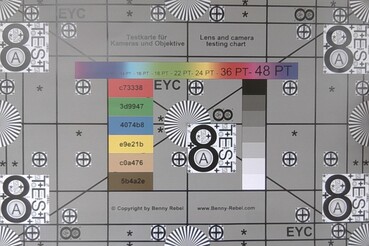


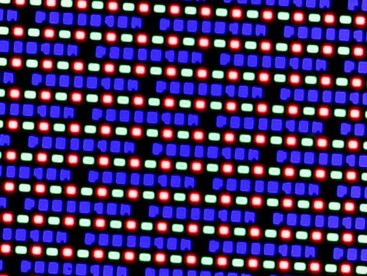
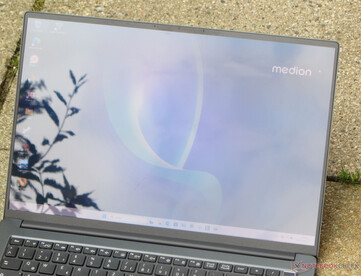
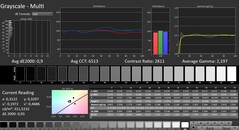
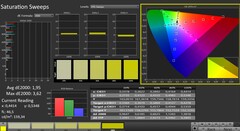
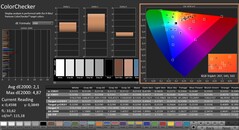



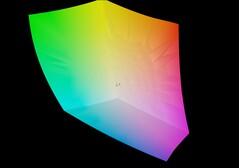
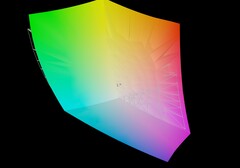

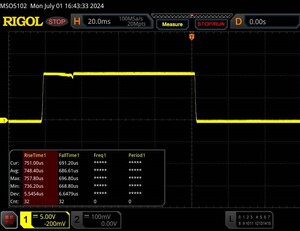
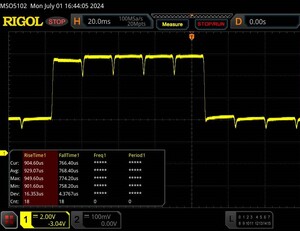
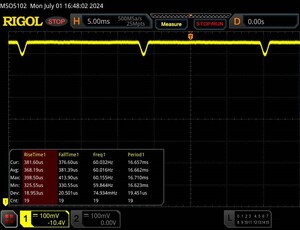
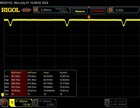

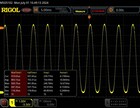
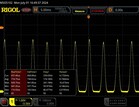
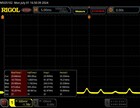


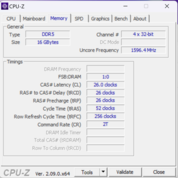
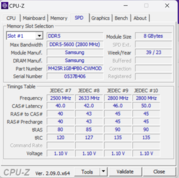
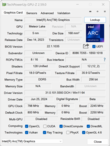

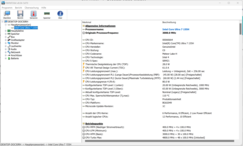

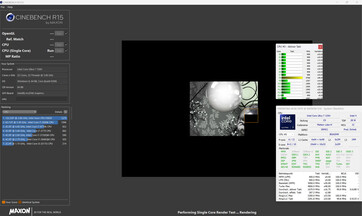
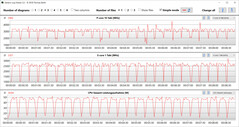
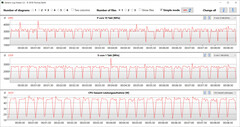
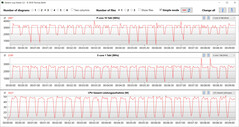
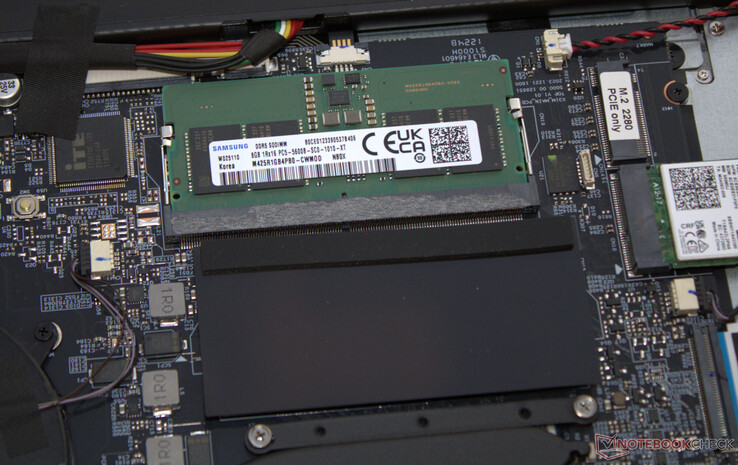
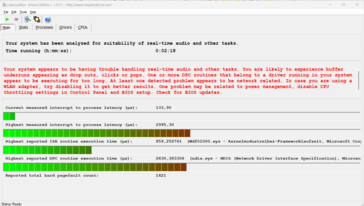

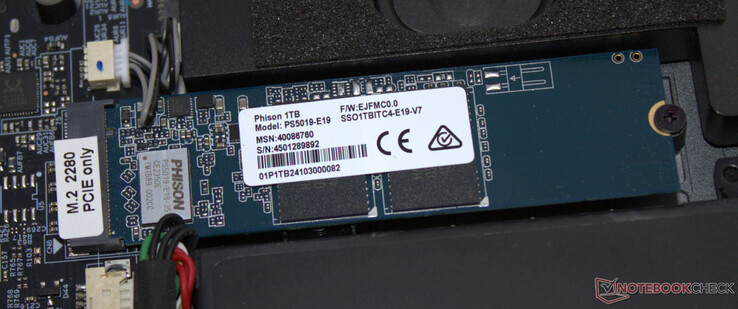
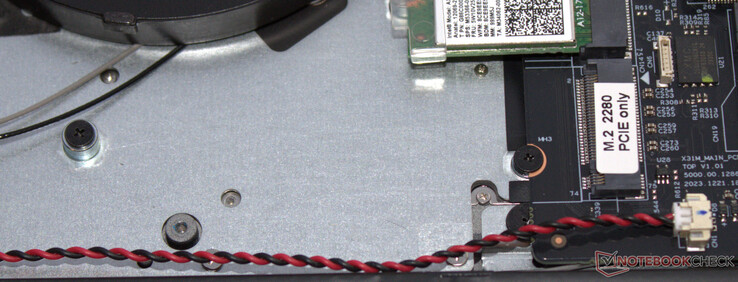

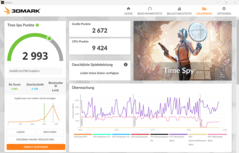
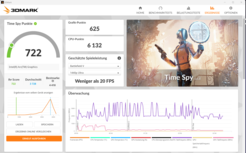
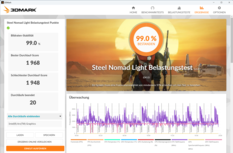
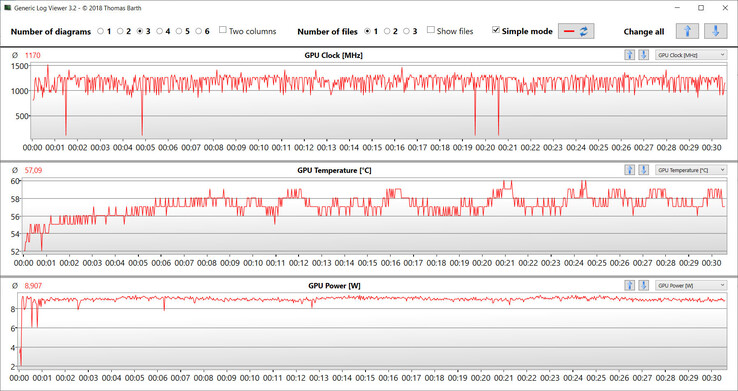
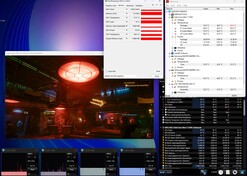

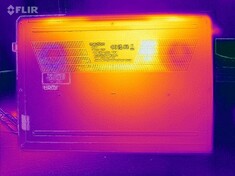
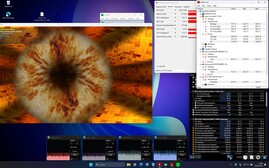
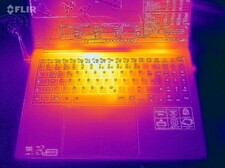

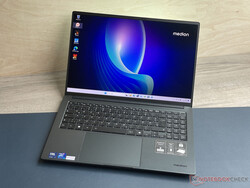
 Total Sustainability Score:
Total Sustainability Score: 
